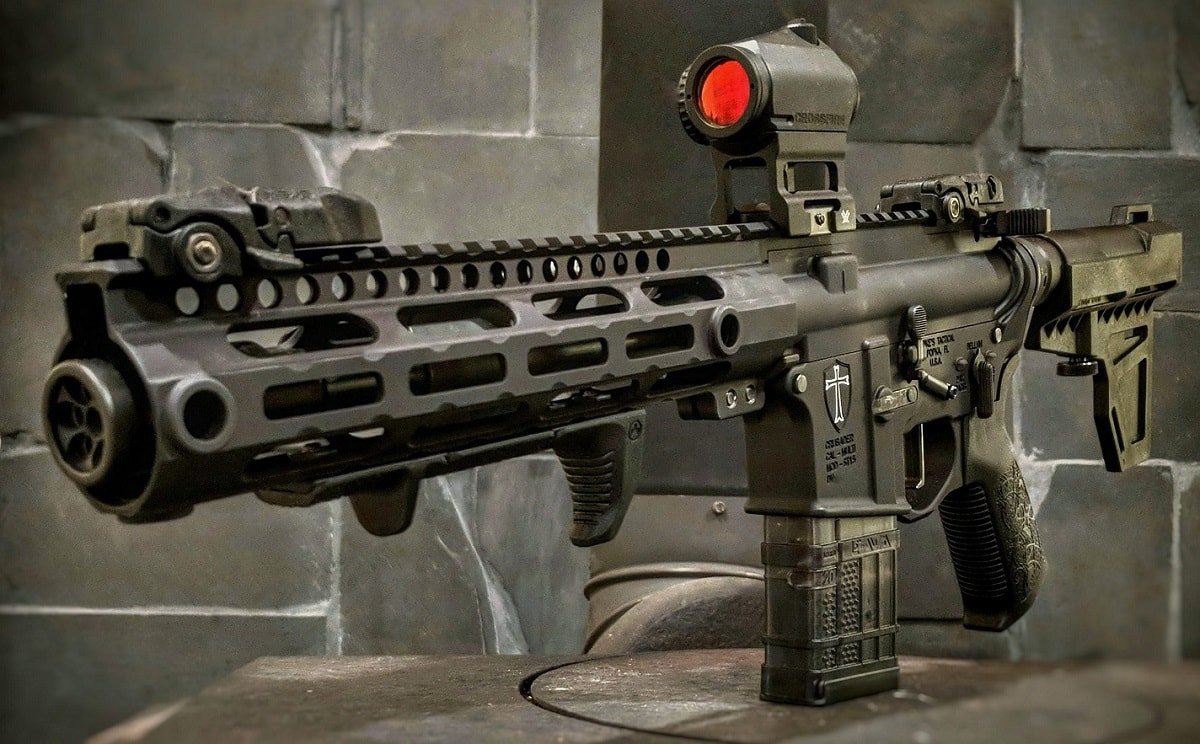A downside of the record sales in firearms is that the price of said firearms is also at record levels. For many, that could mean that you’re priced out of an AR-15 or a Glock handgun. While there are probably good options in “used” firearms, another option is to build one instead.
Do-It-Yourself (DIY) firearms aren’t new, and actually give you the option to add some customization instead of merely buying “off-the-shelf.” While it takes a little bit of skill and patience, building an AR-15 or Glock handgun is something first-timers should be able to tackle.
The first thing to consider is that under federal law you can build pretty much any standard firearm at home – and by that, it means any gun you can legally buy from a licensed dealer. The catch, however, is what state or local laws may apply – California for one requires that you follow certain restrictions for the state. Likewise, you may still need to file for approval with the ATF for any NFA firearms that include suppressors or short-barreled rifles/shotguns. It is also worth noting that the Firearms Owners Protection Act of 1986 completely bars the production of any new machine gun. Another legality to consider is that while you can build as many firearms as you like, you can’t sell those guns without a federal manufacturer’s license from the ATF.
BYO Kit
Building a gun could be described as part remodeling/customizing a kitchen and then assembling a model kit. This is because you don’t just buy all the parts in a box and put it together, yet once you have the parts it does go together somewhat like a model. Essentially it comes down to choosing the particular frame, picking the lower parts, and then customizing to fit your personal tastes.
For an AR, you’ll need a number of upper receiver parts including a barrel, gas tube, gas block, handguard, charging handle, bolt carrier group, and stripped upper receiver. Most barreled upper receivers will actually include those in kits that are preassembled, but some DIYers may prefer to buy these components individually. Then there is a lower receiver that includes the stripped 80% lower part, along with lower trigger assembly, buffer, buffer tube, buffer spring, and buttstock.
For a Glock (as well as many other handguns), the story is similar. You choose the pistol frame, lower parts, slide, barrel, slide parts, slights, and magazine.
Generally speaking, the DIY process for building a firearm begins with what is called an “80% frame” or “80% receiver.” This is what opponents of the Second Amendment and President Joe Biden have identified as a “ghost gun,” as it lacks a serial number and is thus “untraceable.”
It is a moot point, according to most supporters of the Second Amendment, as apart from few jurisdictions – such as New York City – guns are “registered” to an individual, and once they are sold by the original owner the ATF and law enforcement has almost no way of tracing the gun. It is really only in the movies where a magic database of the owner instantly appears – but perhaps that is the goal of those gun control types.
There are literally dozens of options for 80% AR receivers, so you can pick the one that best suits your budget and needs. In the case of Glock, it is a bit simpler. As Firearmsnews.com reported, “Polymer80 is the only manufacturer of 80% Glock frames.” The maker offers standard size, Glock 17 or 22; or compact size, Glock 19 and 23, frames.
The frame/receiver is called an 80% as it hasn’t been milled out 100%. However, an actual milling machine isn’t required and a cordless drill should be able to tackle the holes, while hand files and patience can complete the frame. Many of the receivers are even supplied with a plastic jig to hold it in a vise. Dremel tools can make for a speedier process, but most experts say that you’ll need a steadier hand and first-timers are more likely to mess up. Go slow and take your time.
Instructions aren’t always provided, but there are plenty of PDFs that can be downloaded, while there are some excellent YouTube videos that provide step-by-step guides for the novice and expert alike.
And despite what the gun control crowd says – this isn’t about skirting laws or trying to create untraceable guns. Like any DIY project, this is really about customization and price.
Peter Suciu is a Michigan-based writer who has contributed to more than four dozen magazines, newspapers and websites. He regularly writes about military small arms, and is the author of several books on military headgear including A Gallery of Military Headdress, which is available on Amazon.com.

